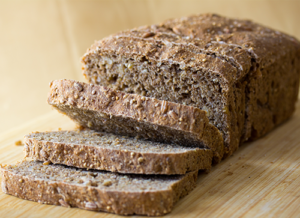Give Back. Get Pie.
Now through 11/22, your purchase of a locally baked apple, pecan, or pumpkin Thanksgiving pie from Community Servings provides a week of meals for a neighbor in need. Order today to make a difference!

Consuming whole grains instead of white or “refined” grains can help lower cholesterol, keep blood sugar levels steady, and provides an excellent source of Vitamin B, Vitamin E, and minerals. When shopping for whole grain items like wheat, rice, corn, barley, oats, or quinoa, our nutritionists recommend checking the packaging for the words “100% whole grain.” Products marked “whole grain” will often contain both whole and refined grains.
Tips on Identifying Whole Grains: